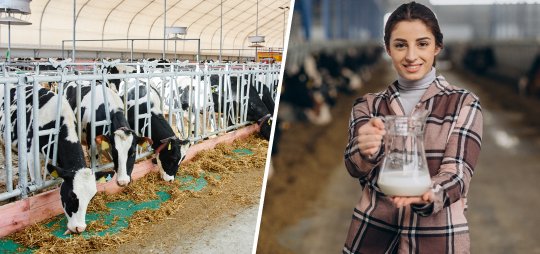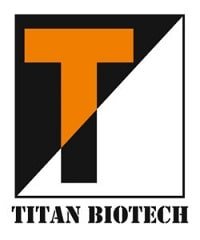Table of Content
- Why Do Cattle Face Mineral Deficiency?
- Critical Essential Minerals and Their Roles
- Chelated Minerals Benefits for Cattle in Increasing Milk Yield
- How to Incorporate Chelated Minerals for Cows?
- Advantages of Chelated Minerals for Cows over Inorganic Minerals to Increase Milk Production
- Conclusion
- Titan Biotech Limited: A Manufacturer of Chelated Minerals
- References
Dairy farmers’ primary goal is to produce high-quality milk, which requires ensuring optimal nutrition for dairy cattle. Minerals are critical in various physiological processes essential for health and productivity. However, traditional inorganic mineral supplements often need help with absorption and bioavailability, leading to suboptimal benefits.
Chelated minerals, a revolutionary approach where minerals are bound to organic molecules such as amino acids, offer a game-changing solution to the challenges faced by traditional inorganic mineral supplements. Chelated mineral supplements can significantly improve dairy cattle’s health and milk yield by boosting the absorption and utilization of essential minerals. It delves into the crucial role of chelated mineral mixture for cattle in overcoming the limitations of inorganic mineral supplements, thereby paving the way for a substantial increase in milk production.
Why Do Cattle Face Mineral Deficiency?
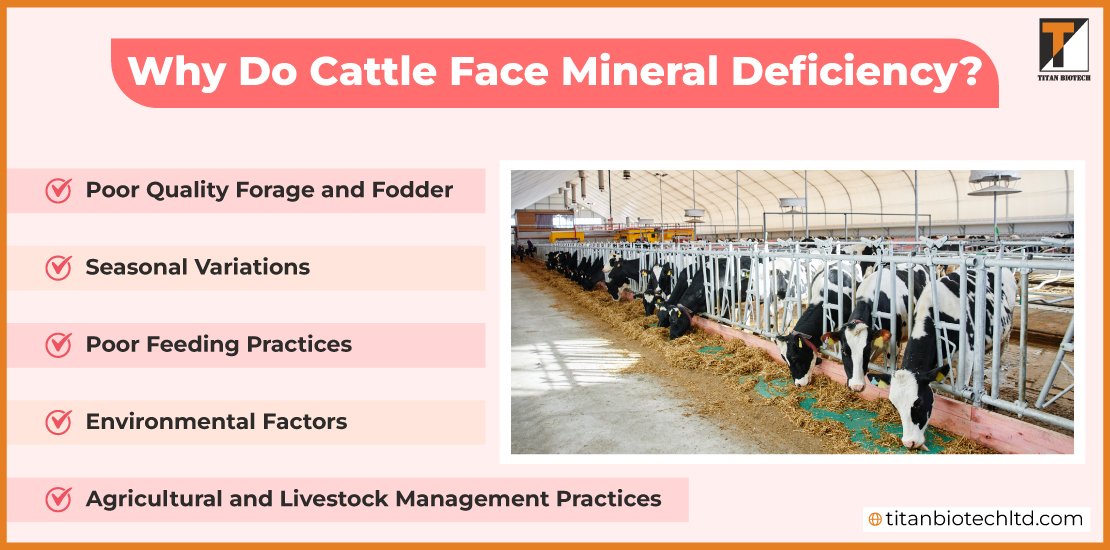
Cattle in India face mineral deficiencies due to a combination of factors related to dietary practices, agricultural methods, and environmental conditions. Here are the primary reasons for mineral deficiencies in cattle:
- Poor Quality Forage and Fodder
- Nutrient-Deficient Soil- Many regions in India have soil deficient in essential minerals such as calcium, phosphorus, and magnesium. Plants grown in such soils cannot accumulate adequate amounts of these minerals, resulting in forage that lacks essential nutrients.
- Monoculture Farming Practices- The widespread practice of monoculture farming depletes soil nutrients over time, leading to reduced mineral content in crops and, consequently, in the fodder fed to cattle.
- Seasonal Variations
- Dry Season Challenges- During the dry season, the availability of green fodder diminishes significantly, leading to reliance on crop residues and stored fodder, which often have lower nutritional value and mineral content.
- Flooding and Rainfall Patterns- In some regions, excessive rainfall or flooding can lead to the leaching of minerals from the soil, further reducing the mineral content available in forages.
- Feeding Practices
- Unbalanced Diets- Many small-scale farmers in India feed their cattle primarily on agricultural by-products, crop residues, and locally available grasses. These feed sources often need to be improved in essential minerals.
- Lack of Supplementation- Due to limited awareness, many farmers do not provide mineral supplements to their cattle. Even when supplements are available, they may need to be correctly balanced or adequately formulated to meet the specific needs of the cattle.
- Agricultural and Livestock Management Practices
- Intensive Grazing- Overgrazing in communal grazing lands depletes soil minerals and produces poor-quality forage, which can lead to mineral deficiencies in cattle.
- Traditional Farming Systems- Traditional farming systems may not prioritize optimal nutrition for livestock, focusing instead on crop production. It results in more attention being paid to cattle’s nutritional needs.
- Environmental Factors
Certain geographical regions naturally have soils deficient in specific minerals. For instance, parts of India have soils low in selenium and zinc, leading to deficiencies in cattle grazing in those areas.
Critical Essential Minerals and Their Roles
Dairy cattle require a balanced diet of essential minerals to maintain optimal health, productivity, and milk quality. However, mineral deficiencies can have severe consequences, leading to various health issues and a significant reduction in milk yield. Let’s examine various minerals and their roles.
- Calcium (Ca)– Vital for skeletal health and milk production. Calcium is a significant milk component crucial for muscle function and nerve transmission.
- Phosphorus (P)– Works with calcium to support bone development and energy metabolism. It is also a component of ATP, essential for cell energy transfer.
- Magnesium (Mg)– Important for enzyme function, energy metabolism, and the nervous system. Magnesium deficiency can lead to grass tetany, especially in lactating cows grazing on lush pastures.
- Potassium (K)– Necessary for maintaining fluid balance, nerve function, and muscle contractions. It plays a role in milk production and overall metabolic functions.
- Sodium (Na)– This mineral is essential for maintaining fluid balance, nerve transmission, and muscle function. Sodium deficiency can lead to reduced feed intake and milk production.
- Sulfur (S)- Sulphur is essential for protein synthesis and overall health.
- Copper (Cu)– Involved in iron metabolism, immune function, and enzyme systems. Copper deficiency can lead to anaemia, poor growth, and compromised immune function.
- Zinc (Zn)– It is essential for immune function, skin health, and enzyme function. Zinc deficiency can impair wound healing and reduce appetite.
Chelated Minerals Benefits for Cattle in Increasing Milk Yield
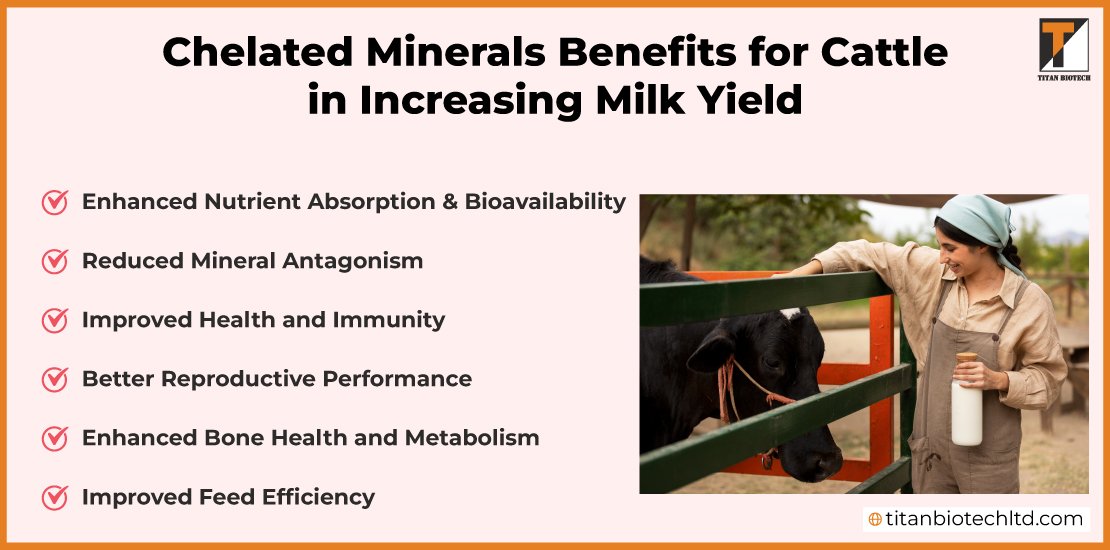
Chelated minerals play a crucial role in enhancing milk yield in cattle by improving the absorption and utilization of essential nutrients. Here are the key benefits of chelated minerals for cattle in increasing milk yield.
- Enhanced Nutrient Absorption and Bioavailability
- Improved Stability in the Gut- Chelated minerals are more stable than inorganic minerals, preventing them from reacting with other dietary components that could inhibit absorption. This stability ensures that a higher percentage of the mineral is absorbed into the bloodstream.
- Efficient Uptake- The chelation process allows minerals to be absorbed via the same pathways as amino acids, leading to more efficient uptake by the gut lining. This results in higher bioavailability compared to inorganic minerals.
- Reduced Mineral Antagonism
- Minimized Competition- Inorganic minerals often compete with each other for absorption sites in the intestine. Chelated minerals are less prone to this competition, ensuring that essential minerals like zinc, copper, and manganese are absorbed more effectively.
- Protection from Inhibitors- Chelated trace minerals for cows are less likely to bind with dietary inhibitors such as phytates and oxalates found in feeds, which can render inorganic minerals unavailable for absorption. This protection increases the animal’s overall mineral availability.
- Improved Health and Immunity
- Enhanced Immune Function- When chelated, minerals like zinc, selenium, and copper are better utilized by the immune system. A more robust immune system helps reduce the incidence of diseases and infections, which can otherwise negatively impact milk production.
- Reduced Stress and Disease- Healthier cows with strong immune systems are less likely to suffer from stress and diseases, leading to more consistent and higher milk yields.
- Better Reproductive Performance
- Optimized Fertility- Chelated minerals for dairy cows contribute to improved reproductive health by supporting hormonal balance and reducing the incidence of reproductive disorders. Healthy reproduction cycles are essential for maintaining steady milk production.
- Reduced Calving Intervals- Improved mineral nutrition helps in reducing the interval between calving, allowing cows to produce milk more consistently over their productive lifespan.
- Enhanced Bone Health and Metabolism
- Strong Bones- Chelated calcium and phosphorus are crucial for strong bones and reducing the risk of conditions like milk fever (hypocalcemia), particularly in high-yielding dairy cows.
- Efficient Metabolism- Chelated magnesium and other minerals play vital roles in metabolic processes. Efficient metabolism supports energy balance and overall health, directly influencing milk yield and quality.
- Improved Feed Efficiency
- Better Feed Conversion-Chelated minerals can improve the overall feed conversion efficiency, meaning cows can produce more milk from the same amount of feed. It is essential in maximizing the productivity of dairy operations.
- Optimal Enzyme Function- Many chelated minerals act as cofactors for enzymes involved in digestion and metabolism. Enhanced enzyme activity ensures that cows get the maximum nutritional benefit from their feed, promoting better milk production.
How to Incorporate Chelated Minerals for Cows?
Incorporating chelated minerals into cattle feed enhances milk production by improving nutrient absorption. These minerals, bound to organic molecules, are more bioavailable, promoting better health, reproduction, and lactation efficiency. Consequently, cows experience increased productivity, which supports dairy farmers in achieving higher yields and improved overall herd performance. Let’s have a look at how chelated minerals can be incorporated into cattle feed.
- Incorporation into Feed- Adding chelated minerals to cattle feed formulations or as part of a mineral supplement program ensures cows receive these benefits. Regular inclusion of chelated minerals in the diet can lead to significant improvements in milk yield.
- Customized Nutrition Plans- Tailoring nutrition plans to include chelated minerals based on specific herd requirements and regional deficiencies can optimize health and productivity.
Advantages of Chelated Minerals for Cows over Inorganic Minerals to Increase Milk Production
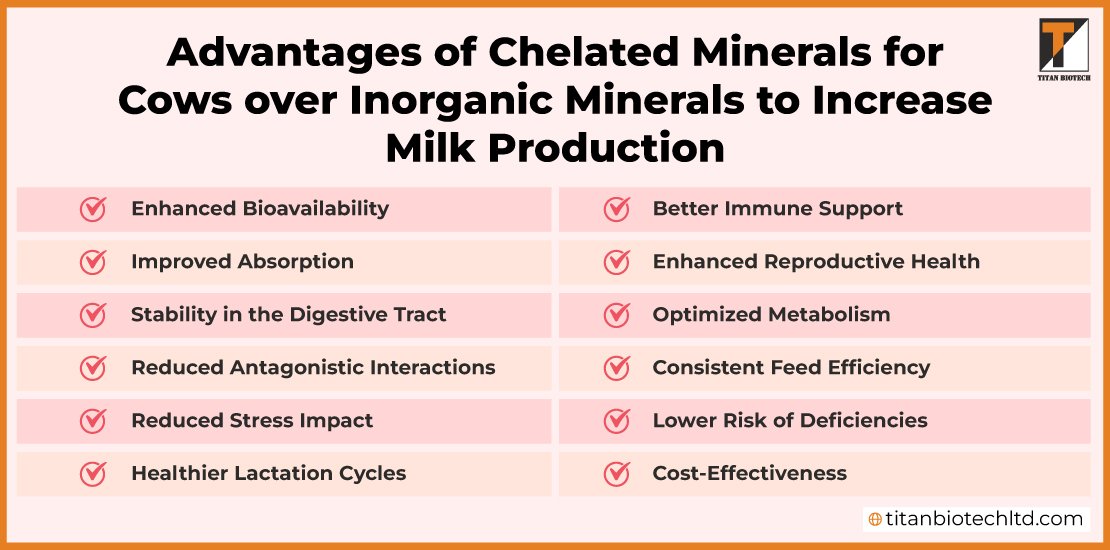
Chelated minerals enhance bioavailability, improve absorption, and reduce excretion compared to inorganic minerals, leading to better health, higher milk yield, and increased productivity in dairy cows. Let’s see how chelated minerals are better than inorganic minerals.
- Enhanced Bioavailability- Chelated trace minerals livestock are more easily absorbed and utilized by the body than inorganic minerals, leading to better nutritional status.
- Improved Absorption- The chelation process protects minerals from binding with dietary inhibitors, ensuring more effective absorption in the gut.
- Stability in the Digestive Tract- Chelated minerals remain stable in the digestive environment, reducing the risk of forming insoluble compounds that are not absorbable.
- Reduced Antagonistic Interactions- Chelated minerals are less likely to interact negatively with other minerals, which can inhibit the absorption of essential nutrients like calcium, phosphorus, and magnesium.
- Better Immune Support- Chelated minerals such as zinc, copper, and selenium are critical for immune function. They help reduce disease incidence and support overall herd health.
- Enhanced Reproductive Health- Improved mineral bioavailability supports reproductive functions, aiding in better fertility rates and healthier pregnancies, which is essential for maintaining milk production cycles.
- Optimized Metabolism- Minerals in the chelated form are more effectively utilized in metabolic processes, supporting energy balance and efficient nutrient use, which directly impacts milk yield.
- Consistent Feed Efficiency- Better absorption rates ensure that cattle get more nutritional value from their feed, improving overall feed efficiency and supporting higher milk yields.
- Reduced Stress Impact- Chelated minerals can help mitigate the effects of environmental and physiological stress, contributing to more stable milk production.
- Lower Risk of Deficiencies- The increased bioavailability of chelated minerals reduces the risk of deficiencies, which can otherwise lead to decreased milk yield and health problems.
- Healthier Lactation Cycles- Overall, improved mineral nutrition supports healthier and more productive lactation cycles, leading to sustained milk production.
- Cost-Effectiveness- Despite potentially higher upfront costs, the improved efficiency and health benefits associated with chelated minerals can result in better economic returns through higher milk yield and reduced veterinary costs.
By addressing these key areas, chelated minerals provide a more effective solution for meeting the nutritional needs of dairy cattle, ultimately leading to increased milk production and improved overall health.
Conclusion
Chelated minerals dairy cattle play a crucial role in enhancing milk production by ensuring optimal mineral absorption and utilization. Unlike inorganic minerals, chelated minerals are bound to organic molecules, significantly improving their bioavailability and stability within the digestive tract. This superior absorption prevents interactions with dietary inhibitors and reduces the likelihood of antagonistic interactions with other minerals, ensuring that cattle receive the full benefit of the minerals provided.
The benefits of chelated minerals extend beyond improved mineral uptake. They contribute to better overall health by supporting immune function, reproductive health, and bone strength, which is vital for maintaining consistent and high milk yields. Enhanced enzyme activity and optimized metabolism from chelated minerals further support efficient nutrient use, directly influencing milk production.
Chelated mineral supplementation can mitigate the effects of environmental and physiological stress, leading to more stable and sustained milk production. Although chelated minerals may incur higher initial costs, their ability to improve feed efficiency and reduce health-related issues can result in significant economic benefits for dairy operations.
Chelated minerals are a valuable nutraceutical supplement in dairy nutrition. They provide enhanced absorption and utilization that support the health and productivity of dairy cattle. Their use is instrumental in addressing mineral deficiencies and promoting higher milk yields, ultimately contributing to the profitability and sustainability of dairy farming.
Titan Biotech Limited: A Manufacturer of Chelated Minerals
Titan Biotech manufactures and exports chelated Minerals. It is a leading manufacturer and exporter of animal nutrition, nutraceuticals, pharmaceuticals, and food and beverage products. With over 32 years of experience and a presence in 100+ countries, we have over 2000 happy customers.
Call or write us if you require top-quality chelated minerals in bases such as methionates, proteinates, and glycinates. These minerals can be used widely in animal feed to improve milk production, yield, and overall health.
References
- https://www.thepharmajournal.com/archives/2022/vol11issue7S/PartS/S-11-7-306-118.pdf
- https://www.semanticscholar.org/paper/Effect-of-Chelated-Minerals-Supplement-on-Milk-and-Bhosale-Antre/f8fca54f616e6377f9007804a91f2b9cf282c75f
- https://www.ncbi.nlm.nih.gov/pmc/articles/PMC5165715/
